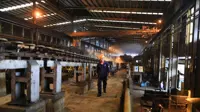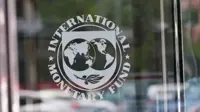IndusInd to tie up with payments bank for affordable housing
04 Jan 2016
Mid-sized private sector lender IndusInd Bank, promoted by the Hinduja Group, is planning to enter the low-cost housing loans segment and is in the final stages of stitching up a partnership with a payments bank (PB) licensee shortly.
"Entering the low-cost housing loans segment is both a diversification as well as a natural extension of our microfinance activities. It is at the assessment stage and in a few months, we will be firming up the plans," the bank's managing director and chief executive Romesh Sobti told PTI.
He said at present, the bank originates loans for mortgage major HDFC and entering the low-cost housing segment will also help it to meet priority sector lending targets.
"There is an active re-look at low-cost housing, which is a better priced. The exercise is going on now to assess low-cost housing," he said in an interview.
Sobti refused to reveal the name of the payments bank entity it is looking at partnering with but said it may involve taking no equity stakes.
"You will see some announcements coming shortly. It has been in the pipeline for a while. There is a roadmap, but I can't disclose the name now. It will come out in public soon," he said.
"Collaboration doesn't necessarily mean I participate in equity though some people have done that. We believe there is a compulsion to collaborate on both sides, the bank as well as the payments bank," he said.
Sobti said such a partnership will help the bank with another avenue of selling loans, while for the payments bank it is impossible to exist by selling only a single product as selling more products will be revenue accretive.
Not acquiring RSB assets
When asked about acquisitions in the wake of speculations that the bank is in the race to acquire British lender Royal Bank of Scotland's (RBS) domestic loans of up to Rs6,000 crore, Sobti said IndusInd Bank believes in acquiring portfolios if there is some specialisation which comes along with it as it did by buying out ABN Amro's diamond financing business which was with RBS earlier.
"We are not in search of buying portfolios for the sake of buying. Any acquisition has to bring in some specialisation," he said, dismissing speculations.
Sobti expressed confidence that the bank will be able to meet its target of having 1,200 branches by March 2017 from 854 in September 2015.
On the bank's low CASA levels, he said the share of the low-cost current and saving account deposits is likely to cross the targeted 35 per cent this fiscal year itself.
Increasing the Current and Saving Account (CASA) is crucial for banks in the backdrop the new base rate calculation regime based on the marginal cost of funds which will be effective from April.
Analysts are of the opinion that lenders like SBI and HDFC Bank, which have higher CASA, will not be impacted much under the new loan pricing regime.
However, he claimed that shifting to the marginal cost of funds for calculating base rates will not hurt his bank as it already has adopted a hybrid model for computing base rate.
Though he feels the size of the branches will come down with a greater proliferation of digital technology, Sobti said the brick-and-mortar branch structure is here to stay and a bank like his can have up to 2,500 branches.
Sobti, however, declined to put a target, saying a three-year network expansion programme till March 2020 will be made later, detailing his branch expansion strategy.
With the growing footprint, one should not expect a dramatic improvement in the cost-to-income ratio, he said, adding there will be an improvement in the key monitorable numbers in the next two years, once more of the new branches become profitable.
"We are at the stage of investing to grow. Therefore, stability in terms of cost-to-income ratio is more desirable at this stage of growth than reduction," he said, adding a full-service universal bank like IndusInd cannot have a cost to income ratio below 40%.
The bank is targeting to have a loan mix between retail and corporate at an even level by the end of the fiscal, and as a de-risking strategy, focusing on the non-commercial vehicle retail loans segment, including a loan against shares, property, agriculture and gold loans.
For long, funding truck and bus buyers, especially from the promoter group company Ashok Leyland, has been a strong growth driver for the bank.
At present, the non-vehicle retail loans account for 12 per cent of the overall book and the target is to grow it to 20 per cent in the next two years, he said.
It can be noted that the reverses on the commercial vehicle segment on account of the economic slowdown had resulted in the percentage share of the higher margin retail loans segment to fall in the low-40s, which the bank is now trying to grow.
When asked about the comparisons with its larger rival HDFC Bank, which posted 30% profit growth for record 30 quarters in a row, Sobti said that there is no particular strategy to grow at that level, but added that the comparison is a "compliment".
"If you do good basic banking, focus on both sides of the balance sheet, and are a good universal bank, then most banks will converge to the same model," Sobti said.








.webp)















